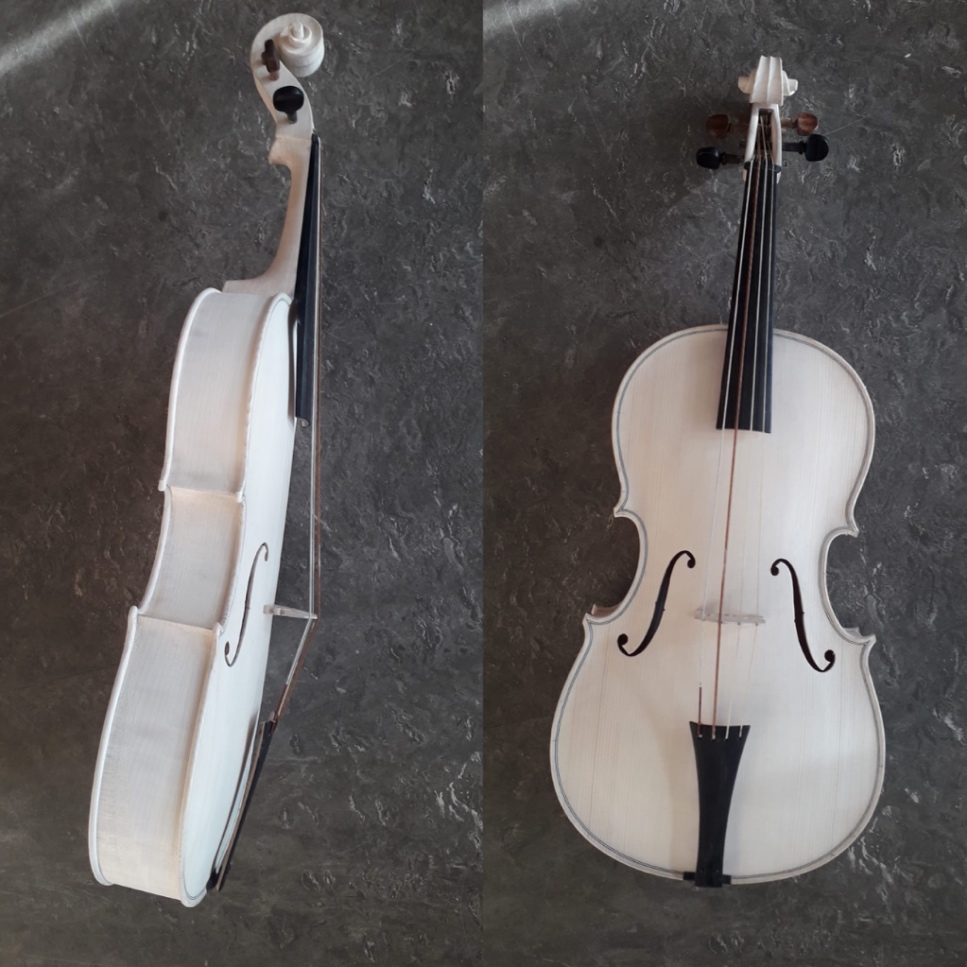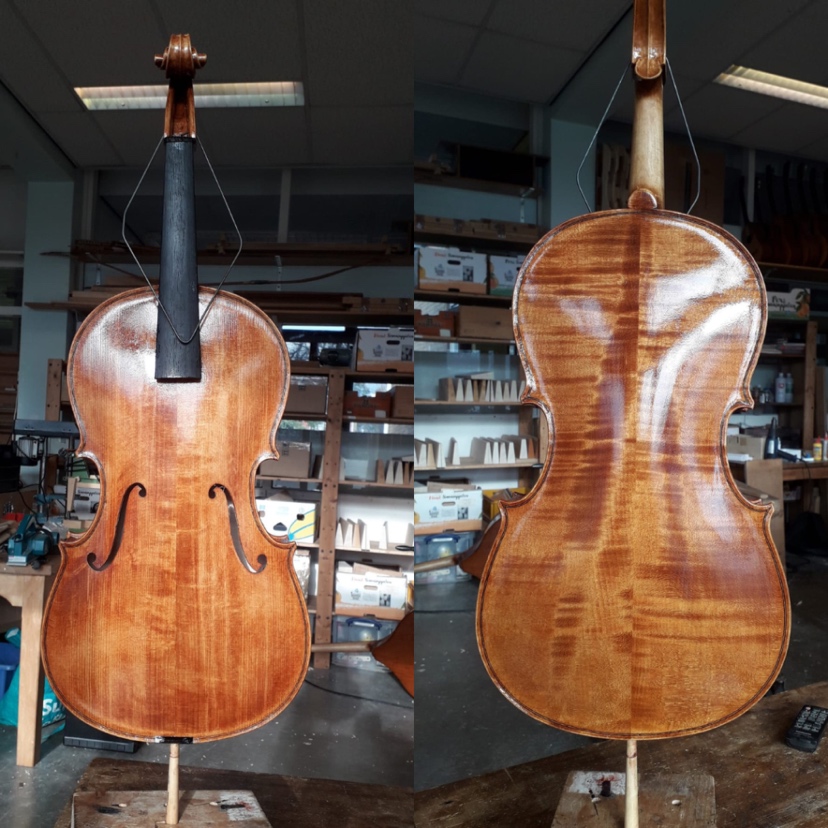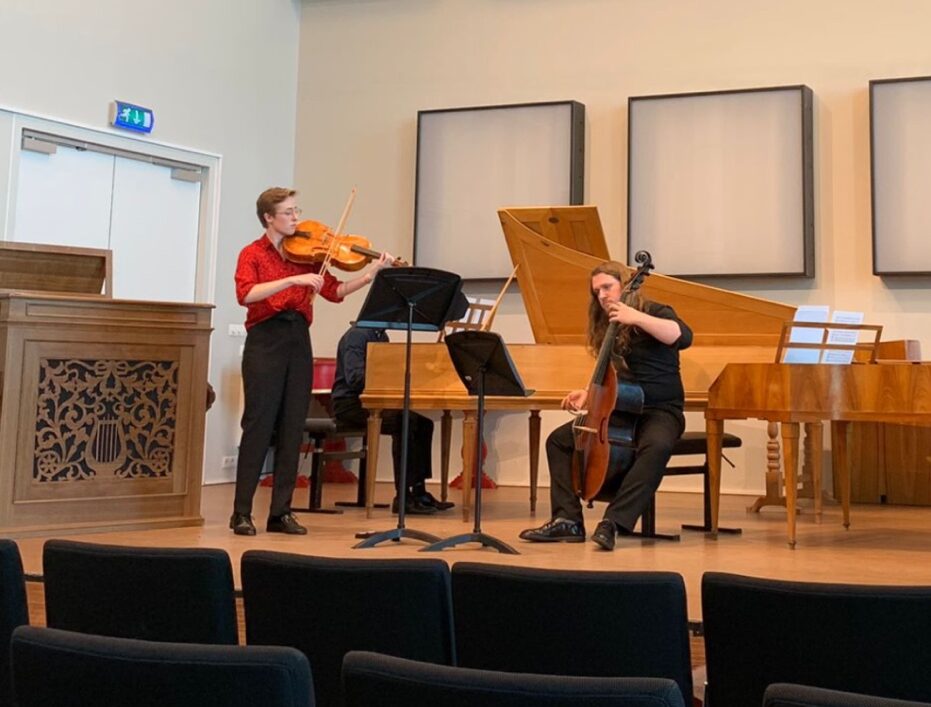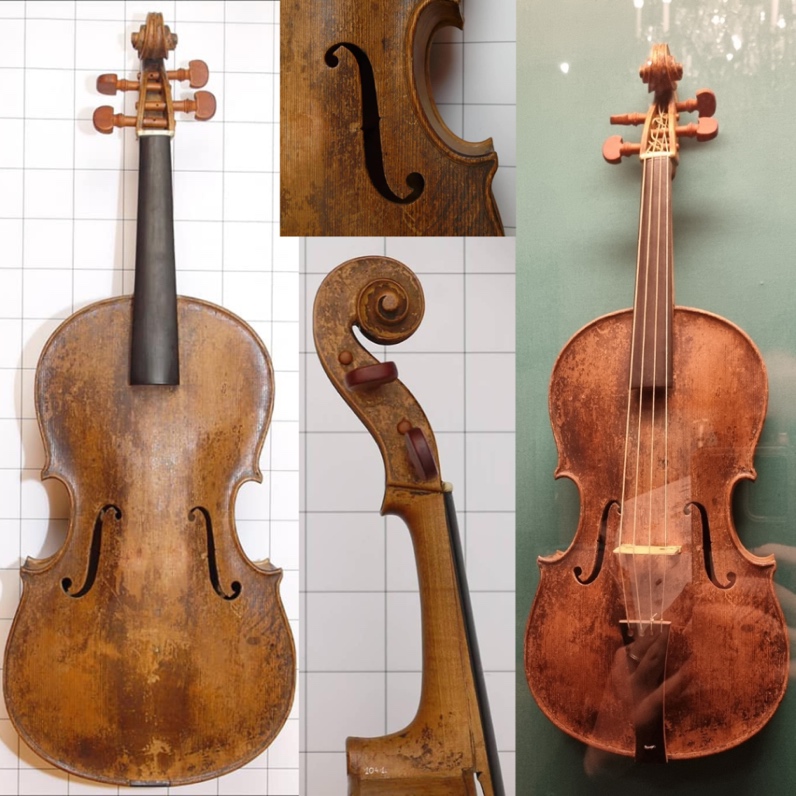
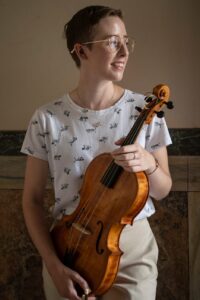 She may look like your average viola at first glance, but most violists look at her with wary eyes and ask why on earth I play an instrument with such unusual dimensions. Maybe it is a little crazy, but I will explain my reasoning and logic – or perhaps lack thereof!
She may look like your average viola at first glance, but most violists look at her with wary eyes and ask why on earth I play an instrument with such unusual dimensions. Maybe it is a little crazy, but I will explain my reasoning and logic – or perhaps lack thereof!
The ‘average’ modern professional viola has a body around 40cm long, with ribs about 3.5cm tall. Violas have a lot more variation than violins even in modern form, but the general measurements are taken from Cremonese instruments, many of which were cut down or adjusted in the 19th century. This is not to say that a viola of these dimensions is not historically accurate, more than likely there were instruments made to these dimensions, but there was also a huge amount of variation between instruments and makers, which is not reflected in today’s ensembles.
Bertha was inspired by a viola in the Kunsthistorische Museum in Vienna, which caught my eye on a visit in November. This instrument was made in 1707 by Johann Michael Alban (1677-1730). From Bolzano, Italy, he moved to Graz in 1700. The viola is in original condition, with no modifications. The back is 45cm long, but it has a substantially shorter neck than average to make it manageable to play.
 I had noticed other similarly large instruments in other museums around Europe – in Basil, London, and recently Berlin. There is huge variation in the sizes and shapes of violas in these museums. Of course, one argument which has been made many times is that mostly the unplayable instruments end up in museums. But this could not be true, as there are Stradivarius, Guarneri violins worth millions in these same cabinets, as well as Stainer and Amati instruments. The unique instruments with unusual dimensions were clearly treasured in their prime, and luckily managed to survive for us to see them in the present day (if only we could hear them played regularly too!). It is certainly true, though, that they fell out of fashion or preference in the 19th century, which may be why they ended up in museum collections rather than the instruments of professionals. I fully understand why this is the case after playing the most recent concert with Theresia in Geneva, it was considerably more difficult to play the Beethoven symphony septet arrangement on my viola!
I had noticed other similarly large instruments in other museums around Europe – in Basil, London, and recently Berlin. There is huge variation in the sizes and shapes of violas in these museums. Of course, one argument which has been made many times is that mostly the unplayable instruments end up in museums. But this could not be true, as there are Stradivarius, Guarneri violins worth millions in these same cabinets, as well as Stainer and Amati instruments. The unique instruments with unusual dimensions were clearly treasured in their prime, and luckily managed to survive for us to see them in the present day (if only we could hear them played regularly too!). It is certainly true, though, that they fell out of fashion or preference in the 19th century, which may be why they ended up in museum collections rather than the instruments of professionals. I fully understand why this is the case after playing the most recent concert with Theresia in Geneva, it was considerably more difficult to play the Beethoven symphony septet arrangement on my viola!
The concept of tenor vs alto viola is also very interesting – at what point is a viola a tenor? And did they recognise this distinction at the time? Or were they simply all variations on the same instrument? Perhaps this is a rather lengthy topic for another blog…
Bertha was inspired by the Alban viola, but was not a direct copy. I had detailed discussions with luthier Koen Boschman about what I was looking for in an instrument, and we worked from there.
Pre-varnishing pictures
The instrument ended up being 44 cm long, with a rib height of 6 cm – almost double the normal height! The neck was shortened to 12,5 cm, making the string length quite similar to an average viola. A shorter neck changes the perception of where positions are on the instrument – 3rd position on Bertha feels like 4th position on an average viola. But the standard string length makes it easier to source strings, and also less difficult to swap between instruments if needed. The larger rib depth also makes it easier to play the instrument holding it lower down on the chest rather than the shoulder, this was important to me in order to play earlier repertoire comfortably and in an informed manner.
The resulting instrument
Bertha has a huge sound, with so much resonance on the G and C strings. The tone is more like a cello, blending incredibly well in ensembles, but also has endless power when required. So far, the only downside is in playing solo repertoire with a continuo group that includes a cello. The tone of the viola and cello blends a little too well, and the instrument doesn’t cut through in the way that a smaller viola might.
There is a common misconception that in order to have the best and most historical instrument it should be an original, this is widely desired within the industry, with the alternative being an exact copy of an old instrument. However, these same old instruments being played in the baroque era were new then, often a bit experimental, and for the most part, were not copies of other maker’s instruments. This led to more variation, progress in the design and form of instruments in the violin family, and personally I find it very exciting and interesting to see dramatically different forms of an instrument. Why do we all want copies of these early instruments, with no variation or experimentation? Should we replicate an instrument of the baroque era? Or instead replicate the values and intentions of makers at that time? To me, the intentions and reasoning behind an instrument is far more important than it being a direct copy of something. Having an open mind, and approaching a luthier who can be creative and less restricted to the standardised models is so important. They must be willing to work with musicians on creating something new. As musicians, we are artists, creators, and what is more valuable in art than having your own individual voice. Bertha certainly won’t be the only viola I ever own or play in my life – I plan to constantly keep my ears open to new sound prospects, and continue in my journey of embodying the musical ideas in my mind. We will see what direction this takes.
As performers in the modern day, we must select instruments with slightly different criteria – we have to be practical and take into consideration that we must perform such a large range of styles, and that most of us can’t afford ten or more different instruments to cover all bases precisely. Let’s not use this as an excuse, rather an opportunity to learn more about how instruments developed, and to have instruments made that are historically and culturally informed, fit for purpose. Question the standards, respectfully question everything your teacher tells you, and more than anything – question your own assumptions.
Lets embrace the values of the music we play, celebrate diversity, creativity, and experimentation in the music industry. Remember the values of the pioneers of historical performance practice, and constantly seek new and exciting ways of expressing the music we love.
If you would like to see more examples of tenor violas, and read a bit about some of the surviving original instruments, check out here.
And why Bertha you might be wondering? Well, she’s got to have a name!



